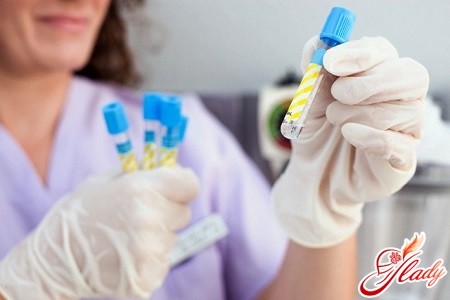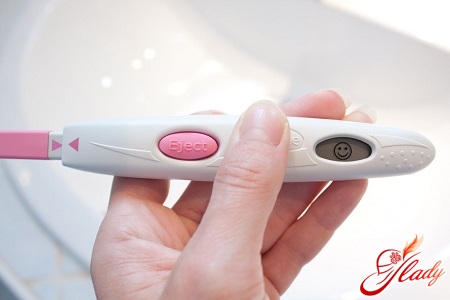
Heavy, foul-smelling discharge from the genitalsorgans should be considered as a symptom of some disease. Therefore, you cannot self-medicate or, even worse, hope that everything will go away. In this case, diagnostics are required to establish an accurate diagnosis. Heavy discharge is quite common. About 35% of the entire female population suffers from it. This is one of the most common complaints women make when they come to see a gynecologist. However, not all women come to the doctor with this problem, so in the medical literature you can find other data on the prevalence of this unpleasant symptom. Sometimes this symptom can reach 90%.
Causes of pathological discharge from the genital organs
The appearance of discharge from the genital tract, whichhave an unpleasant odor, can be associated with various reasons. Therefore, the first thing you should do is visit a doctor, take tests and analyses, and only then begin treatment. The most significant causal factors include:
- various inflammatory processes, which are caused by microorganisms that affect the sexual organs of a woman. In this case, abundant discharge is not uncommon;
- diseases of endocrine glands that are characterized by changes in hormonal balance in the body;
- diseases of a general nature, accompanied by a metabolic disorder of varying severity;
- pathological copious discharge may result from prolonged and severe antibiotic therapy;
- douching the vagina using various antiseptic agents. Remember, if fluid begins to be released from the vagina, douching should be stitched;
- use of intrauterine contraceptives, which increase the incidence of infectious and inflammatory diseases of the genital organs;
- cervical trauma and various background pathological processes that negatively affect the condition of the cervical epithelium. In this case, profuse discharge is a reaction to damage;
- various oncological processes, the source of which are the sexual organs. The liquid thus smells specifically;
- sometimes pregnancy can provoke the appearance of secretions with an unpleasant odor, as the composition of the vaginal microflora changes against the background of hormonal changes in the body;
- impact of damaging environmental factors (radiation radiation, various chemicals);
- factors that cause local irritation (wearing tight underwear, strings, using highly allergenic means for intimate hygiene);
- the presence of urogenital fistulas and intestinal-vaginal, in which the organs of one system communicate with the organs of another system.
The most common infectious and inflammatory diseases of the genitals, which are accompanied by an unpleasant odor, are represented by the following types:
- bacterial vaginosis, when the anaerobic conditionally pathogenic microflora prevails in the vagina (gardnerella predominates in the first place), and the normal flora is practically absent;
- trichomoniasis (infection with Trichomonas);
- candidiasis;
- gonorrhea;
- chlamydia.

Dependence of causal factors on the age of life of a woman
There is a certain pattern betweencausal factors of the occurrence of discharge with an unpleasant odor, which occur in certain age periods of a woman's life. Let's try to figure this out. Knowing these factors will allow us to carry out etiologically (causally) justified therapy without additional examination associated with material costs and loss of time. So, the situation is as follows. In the neonatal period, pathological profuse discharge from the genital tract is most often associated with a change in the content of estrogens. During the period of puberty of a girl, the dominant causal factor is vulvovaginitis, that is, inflammation of the mucous membrane of the vulva and vagina. In adolescence, profuse discharge with an unpleasant odor is usually associated with the penetration of pathogenic flora from the intestine into the organs of the reproductive system. In the reproductive period, the most common cause is inflammatory processes of the female genital organs. In the climacteric period, unpleasant discharge is caused by the atrophic process of the mucous membrane. In menopause, first of all, one should think about the oncological process that affects the female genital organs.
Protective mechanisms of the genital tract of a woman
Normally, the genital tract is reliably protected frompenetration of microorganisms. If these defense mechanisms fail or the microorganism that enters is highly virulent, an infectious process occurs. The following are factors that protect the female genitals:
- presence of lactobacilli in the vaginal microflora;
- acidic environment of the vaginal contents;
- slimming epithelium during menstruation;
- presence of secretory immunoglobulins class A on the mucosa;
- presence of mucous barrier, etc.
They help maintain women's healthorganism by protecting the genitals from various microorganisms and damaging factors. If something goes wrong, there is abundant discharge with a rather unpleasant odor.
Classification of pathological discharge from the genital tract
Profuse discharge from the genitals, whichhave an unpleasant odor, may have different origins depending on where the pathological process is localized. Clarification of the source of discharge will allow for differentiated treatment. It is advisable to distinguish the following types of pathological discharge from the genitals:
- vestibular - abundant secretions are associated with the secretion of the glands of the vestibule, as well as with the functional activity of the bartholin glands;
- vaginal - are associated with the stimulation of glandular cells of the vagina;
- uterine - arise with pathological processes affecting the uterus;
- tubal - these discharges appear if the mother tube is involved in the pathological process;
- cervical - are caused by increased stimulation of glands located in the cervical canal and on the surface of the cervix.

Clinical picture with similar problems
The main symptom of the pathological process inin the female genitals is an increase in the amount of discharge. This discharge has an unpleasant odor. It may also be accompanied by other symptoms, such as itching and burning in the vulva. Constant increased secretion of the glandular epithelium of the genital tract leads to excessive moisture, which causes some discomfort for the woman. Diagnostic search for discharge The presence of discharge from the genitals that has an unpleasant odor is always an indication for a diagnostic search, the purpose of which is to clarify the cause of their appearance. Only knowing the cause will allow for appropriate corrective therapy. It is necessary to begin a diagnostic search with an objective examination (this is an examination and vaginal examination), during which certain rules should be followed. This will allow you to obtain the most reliable information. As for the rules for an objective examination of a woman complaining of unpleasant profuse discharge. An objective examination allows you to obtain the maximum amount of information that is necessary to establish the exact cause of the appearance of pathological discharge from the genital tract. The following rules should be followed:
- vaginal examination is performed during the period of the most pronounced clinical manifestations (when complaints appear, you should immediately contact a gynecologist, even if the discharge is uninvested);
- after the last reception of an antibacterial drug should take at least 3 days;
- be sure to examine not only the genitals, but also the opening of the urethra, as well as the anus and the skin of the perineum;
- in some cases, not only a vaginal, but also a rectal examination is indicated.
After an objective examination, the doctor plansa certain plan of diagnostic measures, having made a preliminary diagnosis. Further examination is aimed either at confirming or refuting the diagnosis. Additional research methods In the presence of pathological discharge from the genital tract with an unpleasant odor, both mandatory and optional methods of laboratory and instrumental diagnostics can naturally be carried out. During these studies, it is possible to draw a conclusion about whether the vaginal microflora is in a state of normocenosis or whether there is dysbacteriosis, that is, a violation of the normal quantitative and qualitative composition of the microflora. Mandatory research methods Mandatory research methods that are recommended in the presence of discharge from the genital tract with an unpleasant odor include:
- determination of the nature of the vaginal microflora;
- taking a smear to identify trichomonads;
- the detection of gonococci in the smear;
- determination of candida spores in the smear;
- diagnosis on chlamydia and ureaplasma(for this purpose, both serological testing and polymerase chain reaction, which is the "gold" standard for diagnosing urogenital infections) can be used;
- determination of titers of herpes viruses, papillomaviruses, cytomegaloviruses, HIV.
Conducting these studies allowsdetermine the presence of the most common causal factors that lead to the appearance of pathological discharge from the genital tract. Additional studies have less diagnostic value, so they are used only when indicated.
Principles of treatment of pathological discharge from genital organs
Treatment of pathological discharge from the genitalstract must be carried out in a timely manner and taking into account the potential cause. It is imperative to take into account the patient's age and hormonal background. Treatment of pathological leucorrhoea, which is associated with a violation of the microflora in the vagina, usually consists of two stages: elimination of the pathological agent and restoration of normal microflora in the vagina. In case of hormonal causes and atrophic processes, the main thing in treatment is restoration of normal hormonal balance. If the cause of discharge from the genital tract with an unpleasant odor is an intrauterine contraceptive, then its removal is indicated. The development of an inflammatory process in the vagina against the background of diabetes mellitus requires adequate hypoglycemic therapy, etc. The place of antibiotics for the treatment of discharge As a rule, if profuse discharge from the genital tract is associated with the activation of opportunistic microflora, then the use of local antibiotics is indicated, which have such dosage forms as suppositories, vaginal tablets, creams, and others. The most commonly used drugs are those that have a detrimental effect on intracellular pathogens: chlamydia, mycoplasma, ureaplasma, etc. If the cause of the discharge is yeast fungi Candida, then the use of drugs with antifungal activity is indicated. These can be suppositories (in some cases, one suppository is enough for a course of treatment).
Restoration of normal vaginal microflora
This is a mandatory process in the treatment of anyinflammatory process in the vagina, since normal vaginal microflora is able to protect the mucous membrane from the introduction of pathogenic microorganisms. For this purpose, drugs containing lactobacilli are used. These drugs include suppositories that are used once a day and inserted into the vagina for 10 days. Also, to restore normal microflora in the vagina, it is recommended to drink kefir, which is a source of lactic acid bacteria. In elderly people, hormonal drugs are also indicated for this purpose, which can be used either locally or systemically. The need for their use is explained by the fact that lactobacilli are estrogen-dependent, so with a low estrogen level, they simply do not take root. Of the local drugs, medicinal suppositories based on Estriol are used.
Control of treatment effectiveness
Evaluation of the effectiveness of the treatmentis carried out on the basis of regression of clinical symptoms, as well as on the basis of laboratory test results. With effective treatment, the disappearance of pathogenic microorganisms in the smear is observed. However, the course of treatment must be completed to the end so that there is no relapse of discharge with an unpleasant odor. Thus, pathological profuse discharge from the genital tract can be associated with various reasons, but in any case, they should be considered as a variant of pathology. To carry out effective treatment, it is necessary to accurately determine the cause, which must then be eliminated. Treatment of discharge should be started as early as possible and prescribed only by a doctor, since self-medication can be accompanied by the development of superinfection, which is difficult to treat.









